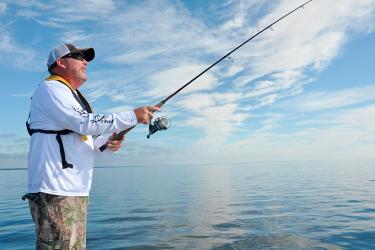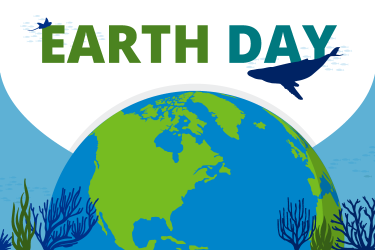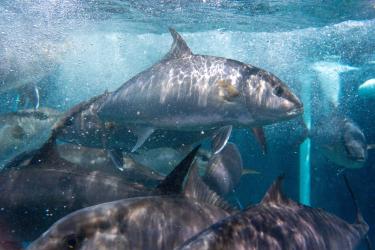Welcome to Seal & Sea Lion Week! Every year NOAA Fisheries dedicates a week to celebrating seals and sea lions, also called pinnipeds, to promote education, conservation, and science. This year, we are also celebrating the 50th anniversary of the Endangered Species Act, highlighting Hawaiian monk seals, and exploring ways you can help to protect and conserve seals and sea lions!
About Seals and Sea Lions
The word pinniped means “flipper” or “fin-footed” and includes all species of seals, sea lions, and walruses. This week, we will feature these fin-footed mammals and their role in productive marine systems. All seals and sea lions are protected under the Marine Mammal Protection Act, and endangered and threatened species are protected under the Endangered Species Act too.
Pinnipeds are a group of marine mammals that include three different families: Phocids (seals), Otariids (fur seals and sea lions), and Odobenids (walruses).
Phocids (seals) are known as the “true” seals or sometimes the “earless seals.” They have ears; they just lack external ear flaps. They use rear locomotion, meaning they move their back flippers side to side to propel themselves through the water. On land, they hop around on their bellies like an inch-worm.
Otariids (fur seals and sea lions) are known as the “eared seals” because they have external ear flaps. They use front locomotion; their front flippers are used in a similar fashion to the breast stroke to propel themselves through the water. On land, they use all four flippers to “walk.”
Odobenids (walruses) are managed through the U.S. Fish and Wildlife Service. Visit their website to learn about them.
Pinnipeds are one of the keystone species in marine ecosystems, which means they are instrumental in creating and maintaining the ecosystem. Their presence is critical in maintaining a balance in the food web. As predators, pinnipeds eat mainly fish, squid, and crustaceans. They also are a food source for large predators like orcas, sharks, and polar bears. They are important subsistence species for Alaska Natives, who can harvest seals to meet the community’s nutritional and cultural needs, consistent with traditional practices.
Share the Shore—Keep Your Distance
Pinnipeds are semi-aquatic and one of the few marine mammal species to spend a large portion of their lives on land.
When pinnipeds come on land, it can be tempting to try to get close to them. But, it’s important to view these wild animals from a safe and respectful distance for their safety—and yours. Learning how to interact with and observe ocean animals can help you make the right decisions when you encounter them by water, land, or air.
Stay at Least 150 Feet Away from Seals and Sea Lions—No Selfies!
Seals and sea lions need to haul out on land to rest, care for their young, and avoid predators. They can be easily disturbed if people get too close, which can be especially harmful to nursing pups. Please also keep your dogs leashed and children away from the animals.
Keep Your Snacks to Yourself
Feeding seals or sea lions teaches them to associate humans with food, attracting them to vessels or humans on beaches. Trying to feed these animals can be harmful for you and for them. It is also illegal!
Do Not Touch or Move Seals or Sea Lions on the Beach
Seals and sea lions naturally come to shore to rest. Moving them to the water can cause them to drown, especially if they are weak or incapacitated. If you find a sick, injured, or dead seal or sea lion, please immediately contact your local stranding network.
50th Anniversary of the Endangered Species Act
This year is the 50th Anniversary of the Endangered Species Act. That means we’ve been conserving and protecting endangered and threatened species and their habitats both domestically and abroad for 50 years! The Act protects three endangered and four threatened seal and sea lion species.
NOAA Fisheries has made major strides in endangered and threatened species conservation, protection, research, and management. In 2013, NOAA Fisheries delisted the eastern distinct population segment of the Steller sea lion due to continuing efforts to protect the species.
However, both globally and nationally, scientists are sounding the alarm about a biodiversity crisis. This crisis is exacerbated by climate change, which is rapidly altering marine ecosystems. The Endangered Species Act will become even more essential in protecting marine species and ecosystems. We will continue our work to ensure the conservation and protection of listed species.
Species in the Spotlight
Meet the Hawaiian monk seal, a Species in the Spotlight! They are one of the most endangered seal species in the world. Native to the Hawaiian Islands and found nowhere else on the planet, it is estimated that only about 1,570 exist.
Hawaiian monk seals are mostly solitary, unlike other seals and sea lions that can be found in colonies. They usually sleep on beaches and can be found doing so sometimes for days at a time. These seals are "generalist" feeders, which means they eat a wide variety of foods depending on what is available. They eat many types of common fish, squids, octopuses, eels, and crustaceans (crabs, shrimps, and lobsters).
Celebrating Seals
We continue to make conservation progress, but there is still much work to be done to protect seals and sea lions. Our marine mammal and endangered species conservation teams are committed to finding long-term solutions to recover and protect these species. Join us during Seal & Sea Lion Week to learn more about these efforts and the ways you can help support their conservation.










